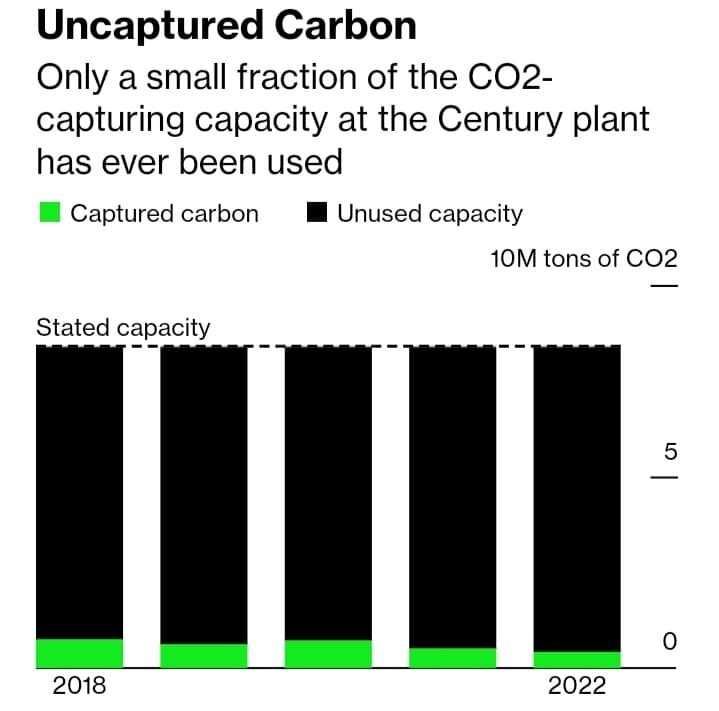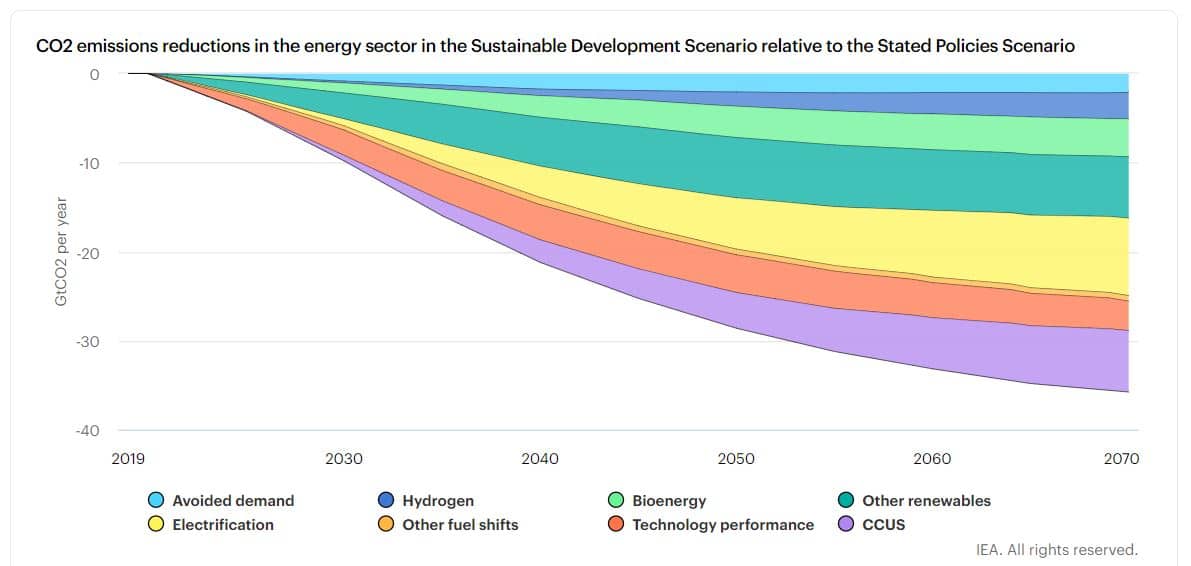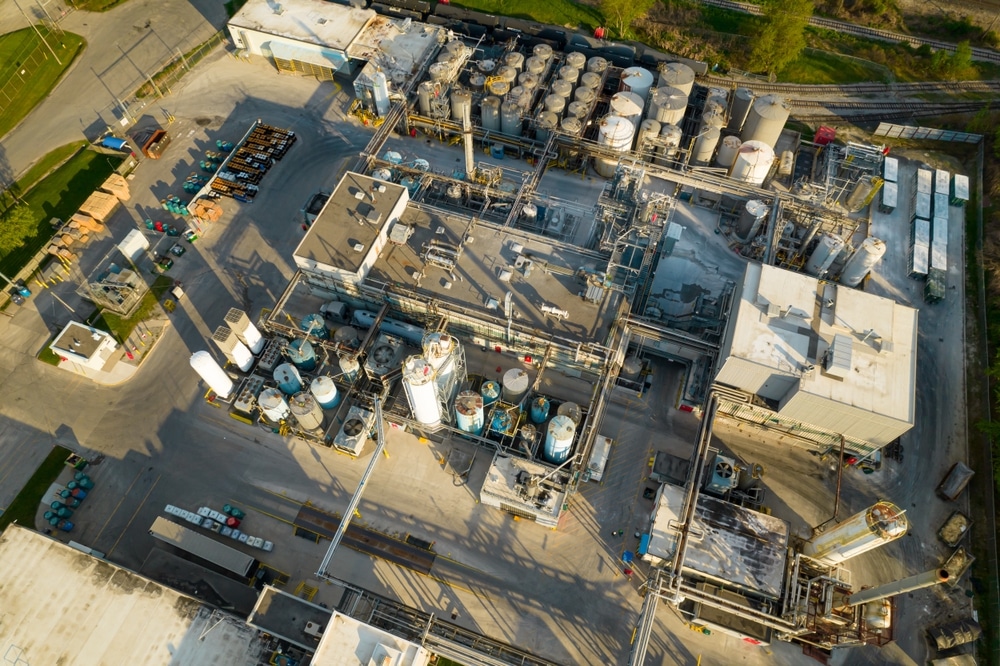Occidental Petroleum, a leader in carbon capture and storage (CCS) technologies, has quietly abandoned its largest CCS plant, the Century, as per Bloomberg report. The technology worked, but economic concerns caused the plant to underperform at no more than a third of its capacity, leading to Occidental’s eventual divestment.
The oil giant sold the Century last year only for a fraction of the cost it spent on constructing it. Today, Oxy is building a landmark carbon capture plant in Texas called Stratos.
Oxy’s Failed CCS Venture
Stratos is the second big bet of the oil major on CCS technology to manage carbon emissions. Century, built in 2010, is located 100 miles away from Stratos. It was designed to be the largest carbon capture plant, accounting for over 20% of global CCS capacity.
While both plants are categorized as CCS, they use different carbon capture technologies. Stratos is using Direct Air Capture (DAC) while Century is pulling carbon from a specific source of emissions.
Century was also built into a natural gas processing plant to suck in the CO2 it spews before it escapes into the air. This carbon capture process is cheaper, uses simpler tech and is more established than the DAC used in Stratos.
-
Though Oxy benefited from the direct application of Century, with the captured CO2 used by the oil firm in producing more oil, the older CCS plant failed to deliver expected results.
As per Bloomberg investigation, Century has never worked at over ⅓ of its carbon capture capacity since it started working 13 years ago. The carbon capture technology successfully worked but limited gas supply is the biggest challenge.

Century had two engines capable of capturing CO2, but only one was operational, never functioning beyond half its capacity. One engine can capture 5 million tons of carbon while the other can catch over 3 million tons. Satellite data show that cooling towers on one engine don’t function, suggesting non-operation.
After a decade of running the project, Oxy quietly sold the struggling asset in January 2022 for about $200 million. The oil major had invested more than 4x that amount in building the plant. An operator at Century noted that they don’t have enough gas to run the plant.
Thus, the company decided to sell it off to Mitchell Group. Despite the sale, Occidental claims to continue using all the CO2 from the old carbon capture plant.
Century’s under delivery raises concerns about the viability of large-scale CCS projects. Can they be economically sustainable?
Carbon Capture Essential for Net Zero
According to the International Energy Agency, rapid scale up of CCS (also called CCUS) is essential to achieving net zero emissions targets. The technology plays four crucial roles in the net zero transition.

Carbon capture, particularly DAC, is one of the focus of the upcoming climate change conference COP28 hosted by the United Arab Emirates. COP28 in the UAE will be a milestone moment when the world will get to know its progress on the Paris Agreement.
As the 2050 net zero target is getting closer, climate experts expect vast expansion of DAC projects to keep temperatures in line with the Paris Agreement goals. A climate scientist believes that the world absolutely needs carbon capture to get to safe warming levels.
However, the current total carbon capture capacity stands only at around 45 million tons of CO2 a year. As per IEA analysis, that’s only 4% of CCS required by 2030 to be on track for net zero.
Oxy’s new billion-dollar DAC plant Stratos aims to rapidly scale carbon capture by absorbing up to 500,000 metric tons of CO2 each year once it operates. That would make Stratos the largest DAC plant on the planet.
The amount of carbon captured by the plant generates corresponding carbon removal credits. Tech giants, aviation leaders, and other major companies have already pre-purchase carbon removal credits from Oxy.
Amazon, Shopify, Airbus, Houston Astros, and Houston Texans are just some of Oxy’s customers for forward purchase agreements. The US government is also pouring billions of dollars in support of the technology.
Oxy’s Stratos is a next-generation DAC plant for capturing CO2 that remains more expensive today than Century’s technology.
According to the company’s estimates, it’s worth over $400/ton compared to below $60/ton to absorb CO2 from processing plants like Century. But DAC costs will go down eventually as Oxy learns and develops more of it.
A rising number of corporations are willing to pay for higher carbon removal credits from capturing CO2. As more of them are getting serious about their net zero commitments, projections show that the market for carbon removals could hit hundreds of billions of dollars.
- READ MORE: CDR and CCS: A Primer
The challenges faced by Occidental Petroleum’s Century carbon capture plant highlight the complexities in running large-scale CCS projects. Yet, the potential of carbon capture technology remains crucial in achieving net zero emissions, underscoring the need for continued innovation and development in the field to address economic and operational challenges.


